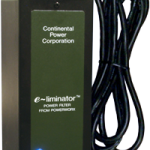Do I Need An Electronic Harmonics Filter?
An Electronic Harmonics Filter is a device used in electrical systems to reduce or eliminate harmonic distortions. Harmonic distortions are unwanted frequencies that are integer multiples of the fundamental power frequency (typically 50Hz or 60Hz in most power systems). These distortions can lead to problems such as overheating of equipment, increased energy costs, and reduced equipment lifespan.
Understanding the Need for Electronic Harmonics Filters
Many types of electronic equipment, whether at home or in commercial spaces, don’t consistently draw a uniform amount of power throughout their operation. For instance, devices with variable speed drives, like some air conditioners or industrial machinery, adjust their power consumption based on their operational needs.
This fluctuating power demand doesn’t manifest as a steady stream. Instead, these devices draw power in intermittent pulses. These power pulses can introduce harmonics into the electrical system, which, in electrical engineering terms, refer to a deviation from the standard sinusoidal wave of an electrical signal1. This phenomenon is not just limited to devices with motors but can occur in various electronic equipment.
When harmonics are present, they can create “noise” or interference in the electrical system. More than just an auditory disturbance, this noise can lead to inefficiencies, overheating, and even reduce the lifespan of sensitive equipment. Under certain conditions, harmonics can make an electrical system resonate, further diminishing power efficiency and potentially leading to premature equipment breakdown2.
The Value of Electronic Harmonics Filters
Harmonics filters, like the one offered by the Powerworx™ e3 system from Continental Power Corporation, aim to mitigate these unwanted effects. They work by “filtering out” the harmonic distortions, ensuring that the power flowing through the system is as sinusoidal as possible3.
By integrating an electronic harmonics filter with spike and surge protection, and power factor correction tools, homes and businesses can achieve more efficient power usage. This not only helps in extending the life of electrical equipment but can also translate to some level of savings on electricity bills, especially in settings where heavy machinery or large numbers of electronic devices are in use.
According to standards set by organizations like the National Electrical Manufacturers Association (NEMA) and the Institute of Electrical and Electronics Engineers (IEEE), harmonics and their associated issues are recognized challenges in power systems4. As a result, using harmonic filters aligns with best practices to maintain efficient and reliable electrical systems.
Adding an Electronic Harmonics Filter
As one of the three benefits of our Powerworx™ e3 system, Continental Power Corporation adds an electronic harmonics filter that works with our spike and surge protector and power factor correction. The result is a home or a business that is more energy efficient and equipment that has a longer duty cycle.
In addition, having an electronic harmonics filter can help to reduce the cost of your electrical bills. Combined with the longer life of electrical equipment, fewer repairs, and the need to replace these devices less often, the cost savings can be significant.
The adoption of harmonic filters, combined with other electrical protection and correction mechanisms, can lead to tangible benefits—both in terms of equipment longevity and operational savings.
Let the energy experts at Continental Power Corporation help you save money in your home or business. For more information on the Powerworx™ e3 system, call us today at (724) 858-6653.
1 IEEE Standard 519-2014 – IEEE Recommended Practice and Requirements for Harmonic Control in Electric Power Systems.
2 NEMA MG 1-2018 – Motors and Generators Standard, which addresses some issues related to harmonics.
3 For a detailed understanding of how harmonic filters work, refer to the IEEE’s guide on harmonics.
4 Harmonic standards and guidelines are covered in publications by NEMA and IEEE.







